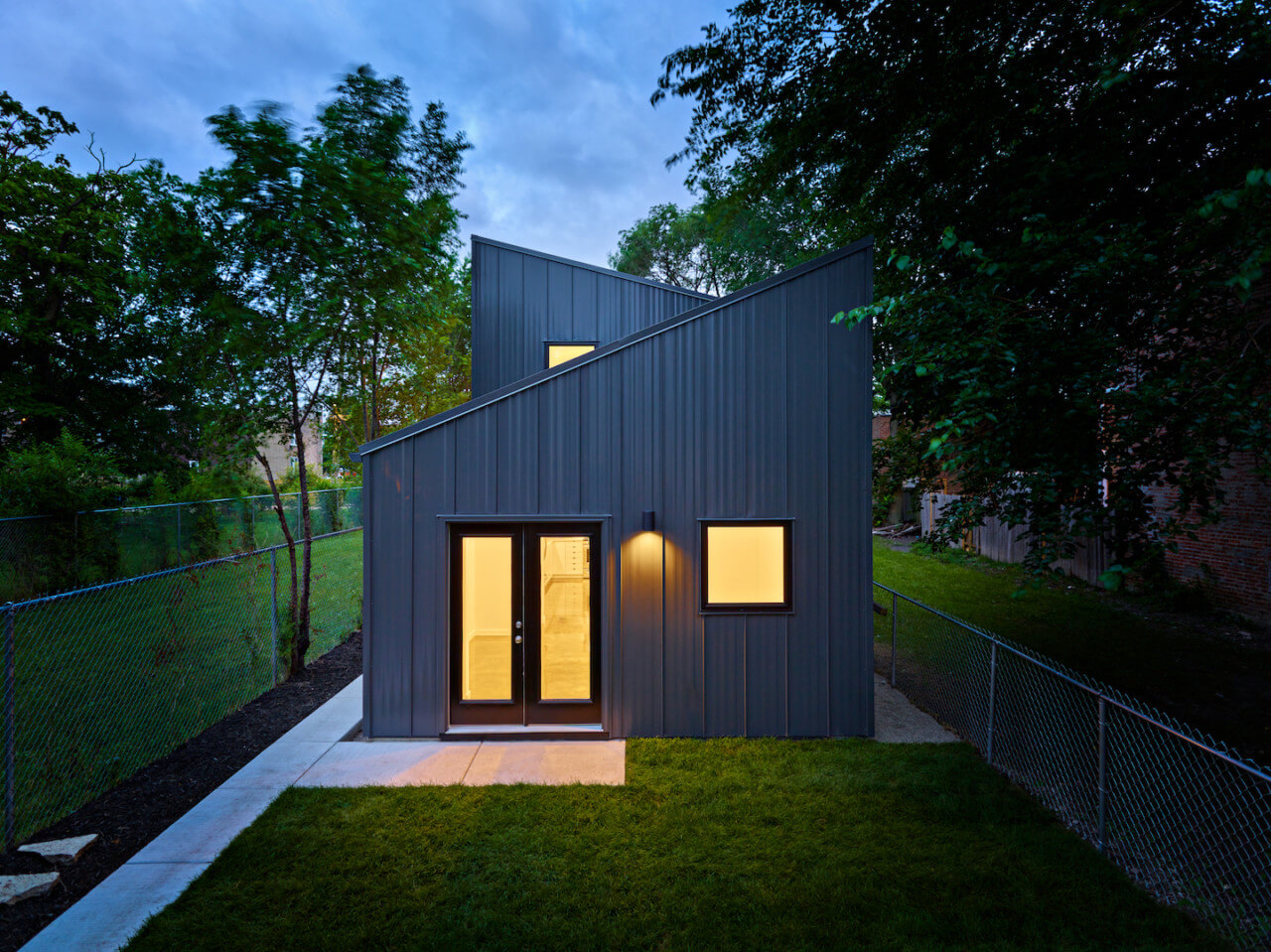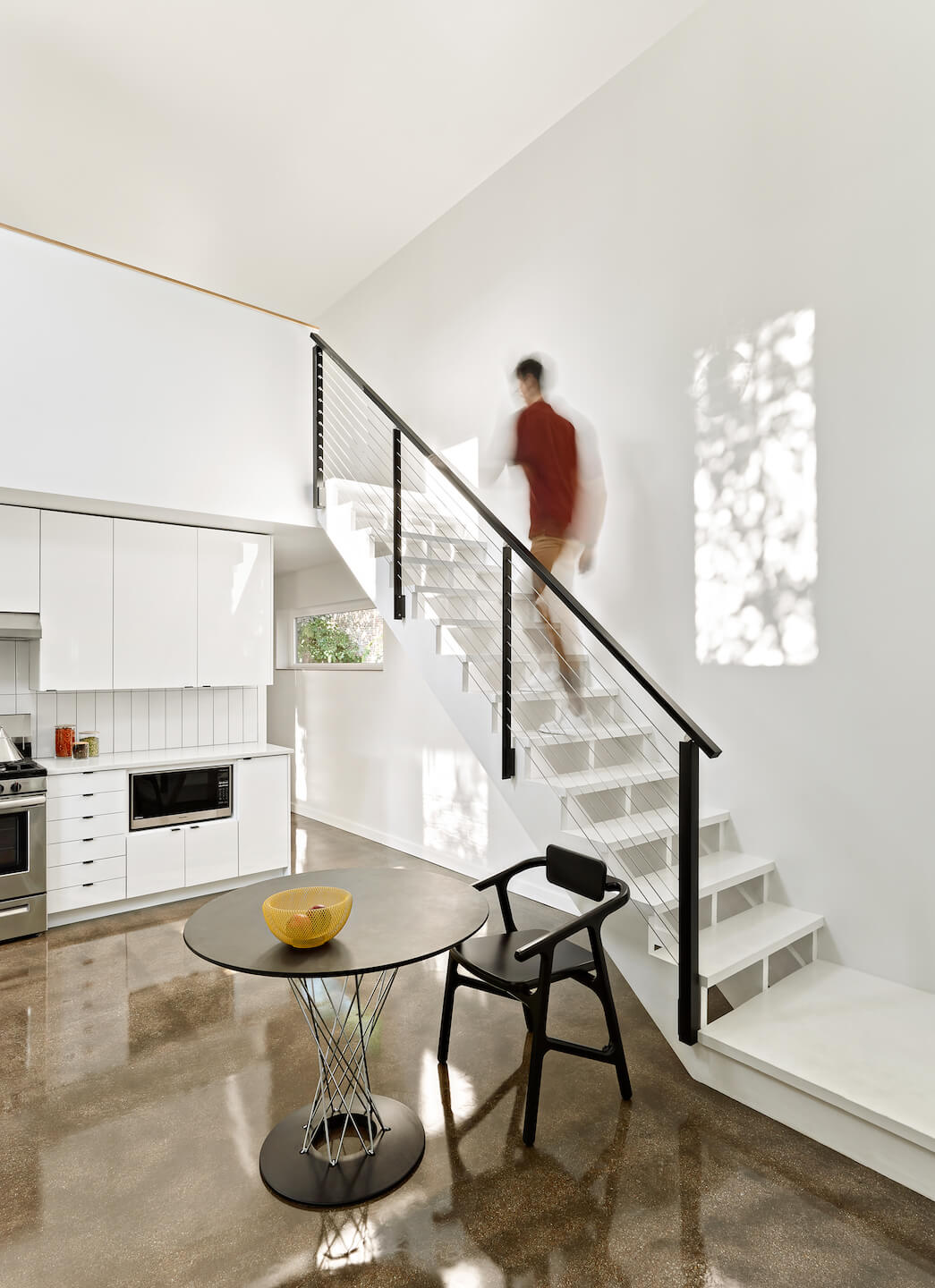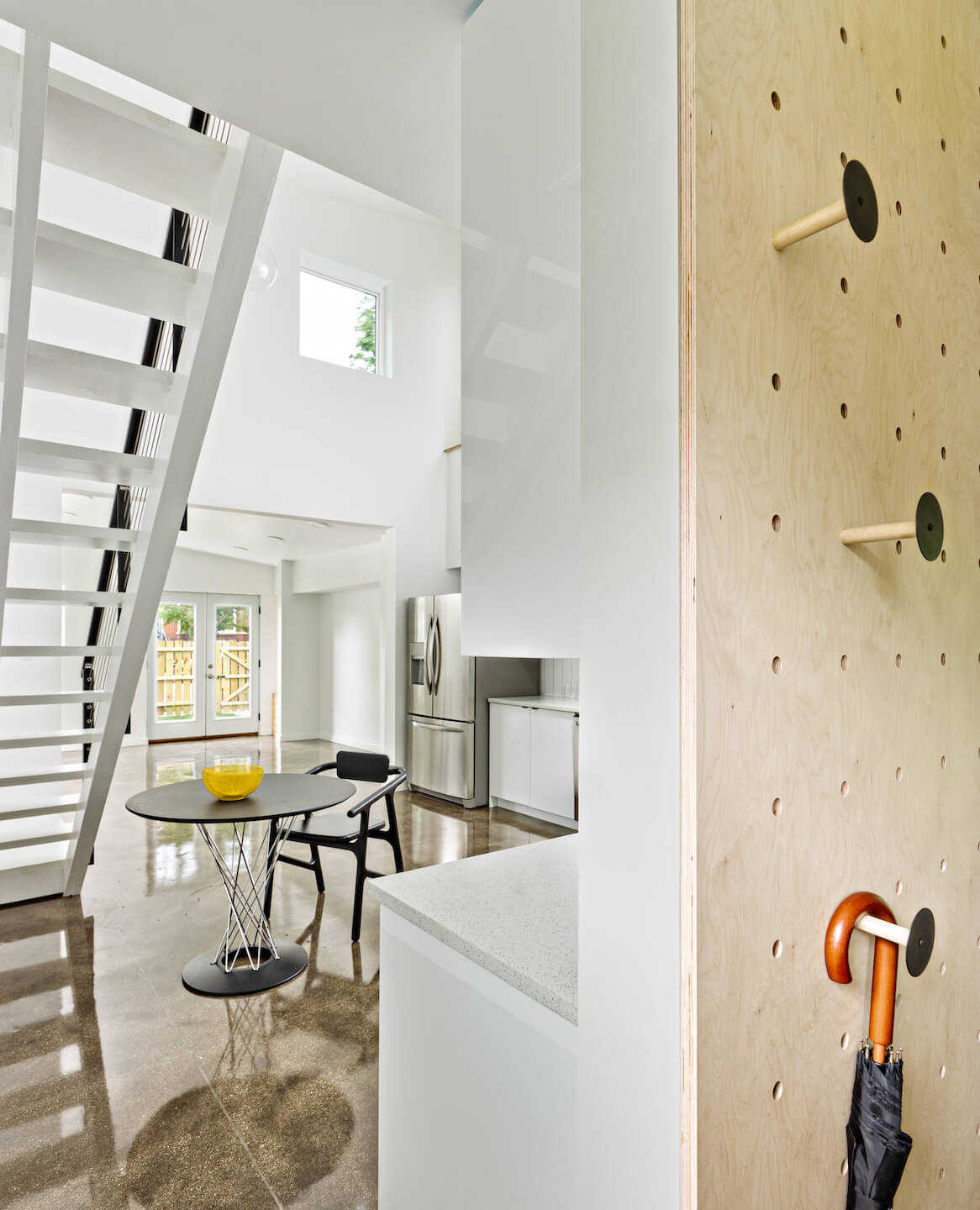The measurement of 25-by-125-feet is an omnipresent one in Chicago real estate—it’s the size of typical residential lots across the city; anything wider is considered “large.”

Narrow and long, it’s a size that doesn’t always easily lend urban infill projects, specifically ones offering much-needed “missing middle” housing options, with very much physical wiggle room. Hem House, a distinctly contemporary 1,300-square-foot single-family home completed last year in the West Side neighborhood of East Garfield Park, offers an attainable and highly replicable model for the abundant vacant residential lots spread across the city.

First listed for $399,000 last summer as one of the least expensive new construction single-family homes in all of Chicago at the time, Hem House was designed by local architecture and design research practice Future Firm with Hem Development, a joint venture between Future Firm co-principal Craig Reschke and real estate developer Joseph Root, serving as the developer. As noted in a press release detailing the project, the partnership was established as a means of bringing together “development, design, and construction with the aim to expand housing options” for typical residential lots in Chicago.
As detailed by Future Firm in the release, the two-bedroom Hem House does not complete with subsidized affordable housing in East Garfield Park but does help to diversify available housing for “folks who are currently renting or are interested in moving to the neighborhood, at a similar price as a condo in a multi-unit building.”

“While there’s a very vibrant art and culture scene in Chicago, there isn’t a lot of bespoke contemporary architecture, and what exists in residential is almost exclusively very high end—so we’re hoping to help change that narrative,” said Ann Lui, Future Firm co-principal, in a statement.
The lot was purchased by Hem Development from the Cook County Land Bank Authority (CCLBA), which itself acquired the once-vacant parcel back in 2015.

Darlene Dugo, deputy director of the CCLBA, praised Hem Development for introducing a singular new housing model to the ubiquitous 25-by-125 lot:
“At the Cook County Land Bank Authority, we’re proud to partner with local organizations and developers that have ambitious visions for their communities,” she said. “For too long, blight caused by decades of redlining and the 2008 housing crisis has depressed property values and economic investment in Black and Brown neighborhoods. By reclaiming vacant lots and building affordable, beautiful community assets, Hem Development is demonstrating what is possible when we enable local architects and developers to resurrect abandoned space. We are proud to partner with them on this state-of-the-art housing project.”
Comprised of two stacked rectangular volumes clad in low-maintenance black metal siding and topped by a simple, single-slopped roof, Hem House stands apart from its predominately brick-faced neighbors (mostly townhouses and two-flats). At just 16-feet-wide, it slides comfortably into its narrow lot atop a slab-on-grade foundation without feeling claustrophobic or oppressively hemmed in. Six-foot setbacks allow for a side garden and central entrance while oversized windows lining its long facade draw in abundant natural light while also affording privacy from the street.

“We wanted to create a house using a few strategic construction and design ideas to keep costs down, as an idea for Chicago’s vacant residential lots,” said Reschke. “This unique use of the typical Chicago 25’ x 125’ residential lot allows Hem House to be experienced as though it is on a much larger site.”
From the side yard, the home’s occupants enter through a glass-doored main entryway featuring a combination mudroom and laundry room. Located to the right of the entryway is the 220-square-foot main bedroom, which spans the entire width of the structure. Adjacent is a smaller 150-square-foot bedroom featuring a large closet and casement windows. A single bath is shared by both bedrooms, the smaller of which is ideal as a home office or child’s room.

On the opposite end of the entryway is Hem House’s spacious open kitchen and living area, with stairs leading up to a 150-square-foot mezzanine featuring a double bedroom and bathroom that overlook the home’s lower level. As detailed in the press release, the living area opens up to 58 square feet of glazed sliding doors “onto a large outdoor patio and garden, blurring the boundary between inside and outside during the summer months, and the double space height from the mezzanine level allows for south-facing light to brighten the living space throughout the day.” Gypsum board walls, painted a bright white to “enhance luminosity,” and polished concrete floors are found throughout the home.
Located within close walking distance to a local parks and public transportation, Hem House has since sold after hitting the market last summer.
“Because Chicago residential lots are all the same size, it’s easy for people to repeat plans and end up with a lot of underwhelming architecture,” added Lui. “We’d like to be a trend in a different direction.”
